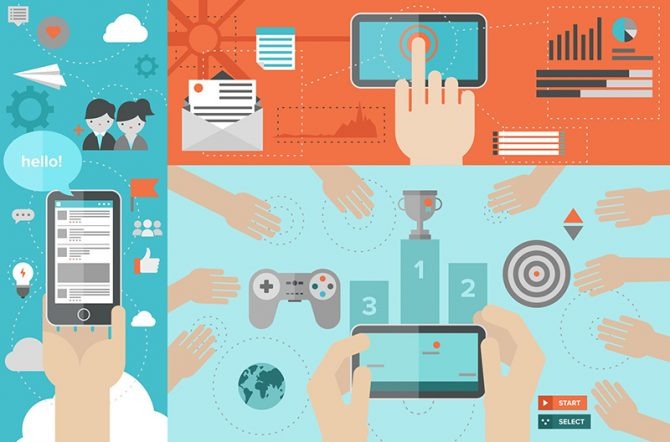Did you know that various types of microlearning work for your department? In this article, we’ll guide you through a general understanding of this favorable microlearning trend and bring to you a list of microlearning types that may utilize to help your staff reach their training objectives.
What is Microlearning?
Microlearning is a phrase used in e-learning to describe small, short-term learning units and activities. Microlearning can assist employees in completing a specific, actionable task. Furthermore, in today’s highly competitive business world, many work-based learners who are always occupied and have only limited time to learn new skills or refresh their memory can benefit from microlearning. As a result, we believe that in the not-too-distant future, microlearning will become an even more essential work-based learning topic.

Recommended reading:
How is Microlearning Used?
Microlearning is a type of training that is brief, concentrated, and available on mobile devices. It can be used for both formal and informal training. Here are a few possibilities:
1. Formal training
You can turn your typical eLearning or macro learning course into a series of microlearning nuggets that are linked together in a learning path. These are created for mobile learning or mLearning, offering learners the freedom to access on the device of their choosing and at their own leisure.

2. Performance support tools (PSTs) or job aids
Microlearning is a great way to help learners improve their performance. PSTs are just-in-time learning aids that are developed to answer specific needs and are available in the learner’s workflow. They may provide a quick repair, a ready reckoner to help them with their assignment, or a checklist to ensure that the result is of the needed quality. Microlearning is an excellent way to address these specialized just-in-time learning requirements.
Implementing Microlearning brings numerous benefits to your corporation. However, transforming from the existing format to microlearning is more than cutting the larger eLearning course into lots of pieces. So, what should we do it? According to experienced consultants of F. Learning Studio, there are 6 important strategies for corporate training. If you are searching for some tips to build your microlearning strategy, take a look at 6 microlearning strategies for successful corporate training.

Recommended reading:
TOP 9 Best Types of Microlearning that You Must Know in 2024
Now, it’s time for our vedette of this article. Do you know that a one-hour training lesson can dwindle the attention span of learners until it is a horror-thrill movie? As for the difficulty in taking away valuable time as well as persuading employees to focus for such a long time to go through boring, impractical training materials, you can go from. Here is a list of types of microlearning that you can choose from, including:
1. Infographics
One of the most popular examples of microlearning is infographics. Infographics provide quick access to information and can be helpful in summing up key takeaways from a long training session. When a worker is ready to learn more, interactive infographics can be linked to more information, expanding the training. This type of microlearning can be used as part of the onboarding process to quickly familiarize new employees with corporate policies and processes.
2. Animated Videos
Animation is not just for kids only, it is a useful approach to translate difficult knowledge for both children and adults. Animation can help break down abstract ideas into digestible pieces if it has a strong visualization advantage. Furthermore, animation offers a variety of styles (character, company background, realistic situation, etc.) that are appropriate for various corporate cultures. That is why it is customary and appropriate for all learners.
Above is one of our online courses specifically made for Inlogik CPI. The movie examines card administration and proposes a way for end-users to handle their own card programs. This animated video was used by Inlogik CPI to provide internal software training as well as promote business branding for employees.
Recommend reading
3. Expert Videos, Webinars/Recorded Webinar
We eagerly await expert guidance and expertise. Learners can access them using this method when they want to review or when they have a specific need. This is considered a common format that may be customized to generate a wide range of learning aids. It can also be incorporated into a standard eLearning program.
4. Interactive parallax-based scrolling
Another intriguing format that takes advantage of the parallax effect typically seen on websites. It employs the same technique to replicate a learner’s ability to “scroll through” a learning route. Interactions and quizzes can be added to the learning route. As the avatar of an employee scrolls through an online scenario, interactive quizzes, questions, and information appear to test their comprehension. This sort of microlearning is particularly engaging for learners with a short attention span, similar to a maze or a world-building game.

5. Gamification
Who says training has to be monotonous? Gamification is one of the best types of microlearning that allows employees to learn while having fun. Incorporate badges, levels, social interaction, and competitiveness into the game.
6. Mobile-based microlearning
A smartphone app, which has been dubbed the “future of learning,” is a very powerful type of microlearning. Not only is it ideal for learning on the go, but it also has the added benefit of being able to consume content both online and offline (when there is no internet access).

7. Podcasts/Webcast
These are also highly handy formats that may be accessible on demand by the employees at the time of their need, especially if they spend time on the road. Podcasts can be short or long, simple or complex, and can cover a wide range of topics. Similarly, webcasts provide a more visual experience and, when viewed live, allow viewers to ask questions, which are then answered in real-time.
8. Geofencing
When you use geofencing, you may offer training to employees in the shape of push notifications when they need it in a specified geographic location. Consider this scenario: your employees arrive at the workplace and require up-to-date information on changes to rules or construction codes. Geofencing delivers an automated update to their smartphone, ensuring that they receive the most up-to-date information at all times.
9. Performance Support Tools (PSTs) or job aids
Checklists, quick-fix videos, and definitions are examples of PSTs that can assist staff in maintaining a consistent quality level when executing a task. This type of microlearning is focused on achieving specific goals for certain performance-based tasks.

Conclusion
Hopefully, this article could give you useful insights and various types of microlearning to make use of while crafting your next training courses. Creating a personalized training program for your staff has never been easier with so many different forms of microlearning to select from. Companies that use microlearning realize that they are providing their employees with effective, efficient, and economical learning options.
Read more:






